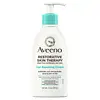What's inside
What's inside
 Key Ingredients
Key Ingredients

 Benefits
Benefits

 Concerns
Concerns

 Ingredients Side-by-side
Ingredients Side-by-side

Water
Skin ConditioningGlycerin
HumectantC14-22 Alcohols
Emulsion StabilisingCaprylic/Capric Triglyceride
MaskingIsopropyl Palmitate
EmollientCetyl Alcohol
EmollientCoco-Caprylate/Caprate
EmollientSimmondsia Chinensis Seed Oil
EmollientOlea Europaea Fruit Oil
MaskingPolyglyceryl-10 Oleate
Skin ConditioningCaffeine
Skin ConditioningAvena Sativa Kernel Extract
AbrasiveAlgae Extract
EmollientChlorella Vulgaris Extract
Skin ConditioningAloe Barbadensis Leaf
MaskingOlea Europaea Oil Unsaponifiables
Skin ConditioningPanthenol
Skin ConditioningHydrolyzed Algin
Maris Sal
Skin ConditioningSclerotium Gum
Emulsion StabilisingC12-20 Alkyl Glucoside
EmulsifyingGlyceryl Laurate
EmollientHydrogenated Olive Oil
Skin ConditioningDimethicone
EmollientCaprylyl Glycol
EmollientSodium Hyaluronate
HumectantParfum
MaskingLinalool
PerfumingCitronellol
PerfumingCitral
PerfumingHydroxycitronellal
PerfumingLimonene
PerfumingGeraniol
PerfumingPhenoxyethanol
PreservativeWater, Glycerin, C14-22 Alcohols, Caprylic/Capric Triglyceride, Isopropyl Palmitate, Cetyl Alcohol, Coco-Caprylate/Caprate, Simmondsia Chinensis Seed Oil, Olea Europaea Fruit Oil, Polyglyceryl-10 Oleate, Caffeine, Avena Sativa Kernel Extract, Algae Extract, Chlorella Vulgaris Extract, Aloe Barbadensis Leaf, Olea Europaea Oil Unsaponifiables, Panthenol, Hydrolyzed Algin, Maris Sal, Sclerotium Gum, C12-20 Alkyl Glucoside, Glyceryl Laurate, Hydrogenated Olive Oil, Dimethicone, Caprylyl Glycol, Sodium Hyaluronate, Parfum, Linalool, Citronellol, Citral, Hydroxycitronellal, Limonene, Geraniol, Phenoxyethanol
Ingredients Explained
These ingredients are found in both products.
Ingredients higher up in an ingredient list are typically present in a larger amount.
Avena Sativa Kernel Extract is is derived from colloidal oatmeal. Besides being a healthy breakfast, oats have many benefits in skincare too.
This ingredient helps sooth, hydrate, and protect the skin. The starches in colloidal oatmeal are able to bind water, keeping the skin hydrated.
The cellulose and fiber in colloidal oatmeal help reduce inflammation. This can also help the skin feel softer.
Colloidal Oatmeal is also an antioxidant. Antioxidants protect our skin from free-radical damage.
Oatmeal also contains beneficial compounds:
This ingredient is created by mixing grounded oatmeal and a liquid base.
Learn more about Avena Sativa Kernel ExtractCetyl Alcohol is a fatty alcohol. Fatty Alcohols are most often used as an emollient or to thicken a product.
Its main roles are:
Though it has "alcohol" in the name, it is not related to denatured alcohol or ethyl alcohol.
The FDA allows products labeled "alcohol-free" to have fatty alcohols.
Learn more about Cetyl AlcoholDimethicone is a type of synthetic silicone created from natural materials such as quartz.
What it does:
Dimethicone comes in different viscosities:
Depending on the viscosity, dimethicone has different properties.
Ingredients lists don't always show which type is used, so we recommend reaching out to the brand if you have questions about the viscosity.
This ingredient is unlikely to cause irritation because it does not get absorbed into skin. However, people with silicone allergies should be careful about using this ingredient.
Note: Dimethicone may contribute to pilling. This is because it is not oil or water soluble, so pilling may occur when layered with products. When mixed with heavy oils in a formula, the outcome is also quite greasy.
Learn more about DimethiconeGlycerin is already naturally found in your skin. It helps moisturize and protect your skin.
A study from 2016 found glycerin to be more effective as a humectant than AHAs and hyaluronic acid.
As a humectant, it helps the skin stay hydrated by pulling moisture to your skin. The low molecular weight of glycerin allows it to pull moisture into the deeper layers of your skin.
Hydrated skin improves your skin barrier; Your skin barrier helps protect against irritants and bacteria.
Glycerin has also been found to have antimicrobial and antiviral properties. Due to these properties, glycerin is often used in wound and burn treatments.
In cosmetics, glycerin is usually derived from plants such as soybean or palm. However, it can also be sourced from animals, such as tallow or animal fat.
This ingredient is organic, colorless, odorless, and non-toxic.
Glycerin is the name for this ingredient in American English. British English uses Glycerol/Glycerine.
Learn more about GlycerinIsopropyl Palmitate is a texture enhancer and emollient. It is an ester of isopropyl alcohol and palmitic acid.
Palmitates are emollients. Emollients help keep your skin soft and smooth by creating a barrier that traps moisture in.
When added to cosmetics, Isopropyl Palmitate creates a silky texture and improves spreadability.
Isopropyl Palmitate may not be fungal acne safe. It can worsen acne prone skin.
Learn more about Isopropyl PalmitatePanthenol is a common ingredient that helps hydrate and soothe the skin. It is found naturally in our skin and hair.
There are two forms of panthenol: D and L.
D-panthenol is also known as dexpanthenol. Most cosmetics use dexpanthenol or a mixture of D and L-panthenol.
Panthenol is famous due to its ability to go deeper into the skin's layers. Using this ingredient has numerous pros (and no cons):
Like hyaluronic acid, panthenol is a humectant. Humectants are able to bind and hold large amounts of water to keep skin hydrated.
This ingredient works well for wound healing. It works by increasing tissue in the wound and helps close open wounds.
Once oxidized, panthenol converts to pantothenic acid. Panthothenic acid is found in all living cells.
This ingredient is also referred to as pro-vitamin B5.
Learn more about PanthenolWater. It's the most common cosmetic ingredient of all. You'll usually see it at the top of ingredient lists, meaning that it makes up the largest part of the product.
So why is it so popular? Water most often acts as a solvent - this means that it helps dissolve other ingredients into the formulation.
You'll also recognize water as that liquid we all need to stay alive. If you see this, drink a glass of water. Stay hydrated!
Learn more about Water